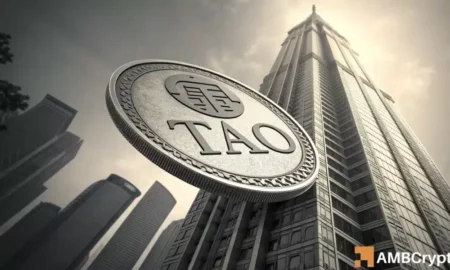Ethereum’s Kohaku Roadmap: A Leap Toward Wallet Privacy and Validator Growth
Introduction to the Kohaku Roadmap
The Ethereum ecosystem is buzzing with excitement following the unveiling of the Kohaku roadmap, a groundbreaking initiative aimed at enhancing privacy and security for cryptocurrency wallets. Spearheaded by influential figures like Vitalik Buterin and Nico Schabanel, this new framework sets out to minimize reliance on centralized tools while ensuring that transaction privacy is prioritized. As Ethereum’s validator queues surge to their highest levels in nearly two years, the interest in staking—driven largely by the recent approvals of ETFs—has never been more pronounced. A demo of the Kohaku features is slated to be presented at the upcoming Devcon event in November 2025.
Enhancing Wallet Privacy and Security
Kohaku represents a significant step towards creating a secure and private wallet ecosystem. It comprises a robust toolkit designed to enable wallets to conduct private transactions safely. Central to this initiative are a software development kit (SDK) and a browser-extension wallet, which exemplify the new features aimed at safeguarding personal data. As Nico Schabanel aptly stated, “It’s time for us to go public so you all can go private.” The ambition is to transform Web3 wallets into “sovereign clients,” only revealing the essential information required for any given transaction. This upgrade not only boosts user security but lays the groundwork for future enhancements like account abstraction and post-quantum verification.
Innovative Features in the Kohaku Framework
The Kohaku roadmap introduces several innovative features that promise to revolutionize user interactions within the Ethereum network. This includes the capability to operate light clients via browsers, employing zero-knowledge proofs for identity recovery, and establishing privacy-first peer-to-peer communication channels. Collectively, these enhancements will facilitate the development of self-custodial wallets that enhance anonymity while maintaining on-chain usability. This strategic focus on user empowerment and privacy is vital in a landscape increasingly threatened by security vulnerabilities.
Validator Queue Dynamics and Staking Trends
While the Kohaku roadmap aims to fortify user-oriented features, the Ethereum network’s consensus layer has been experiencing a surge in validator activities. According to data from ValidatorQueue.com, both entry and exit queues for Ethereum validators have reached unprecedented levels not seen in nearly two years. With exit queue wait times surpassing 40 days, there’s a clear indication of a substantial reshuffling of staking positions. This activity is largely influenced by the growing institutionalization of Ethereum staking, propelled in part by the recent launch of staking-enabled Ether ETFs in the U.S, including notable products from firms like Grayscale and Bitwise.
The Impact of Institutional ETFs on Validator Activity
The surge in validator activity reflects a growing interplay between on-chain staking yields and traditional financial instruments. With prominent ETFs offering staking features, many validators are reassessing their exposure and possibly rotating towards restaking protocols. The demand for staking through institutional channels underscores how Ethereum is becoming more integrated with conventional financing mechanisms. The implications for individual and institutional investors alike could be significant, as the stability and predictability offered by these ETFs may attract even more capital into the Ethereum ecosystem.
Price Stability Amidst Network Growth
Interestingly, Ethereum’s price has shown resilience amid this noticeable uptick in validator queue activities and institutional engagement. Following a brief rise above $4,400 in late September, ETH’s price has stabilized above summer lows, demonstrating a degree of price floor support. The convergence of ETF approvals, rising staking rewards, and the Kohaku roadmap’s advancements appear to provide a robust environment for price retention, even amidst short-term volatility. The dual push of enhanced wallet security via Kohaku and the burgeoning interest in staking ETFs suggests that Ethereum is poised for significant growth in both adoption and valuation moving forward.
Conclusion
As Ethereum evolves through the initiatives laid out in the Kohaku roadmap, the focus on user privacy and security represents a pivotal shift in the battle for cryptocurrency adoption. Alongside this, the growing validator queues and increased institutional participation via ETFs highlight a network that is not only expanding its technical capabilities but is also drawing significant investor interest. These developments position Ethereum favorably for the future, reflecting a harmonious relationship between its foundational elements—privacy, security, and robust growth— that could redefine the blockchain landscape for years to come.
















